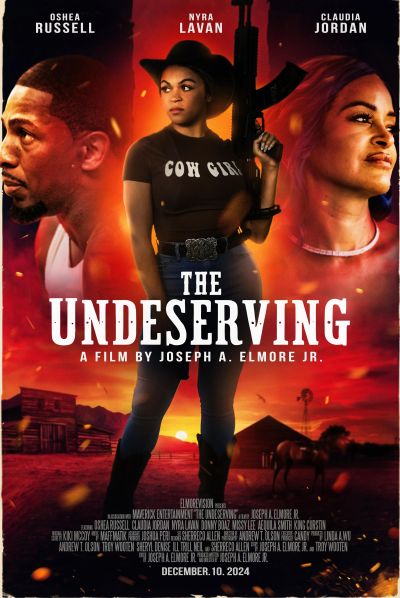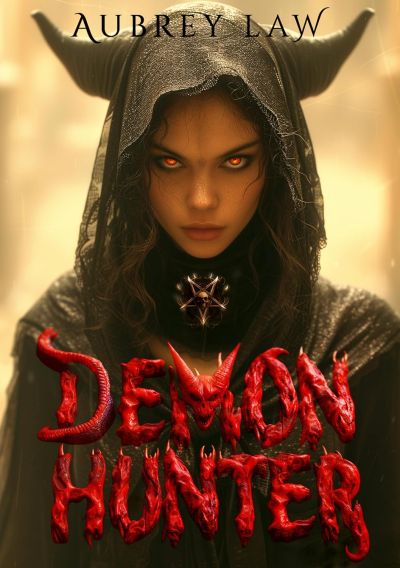★★½
“Air apparent.”
 I only remembered about this when looking at our preview for last year, and realizing I’d not heard anything more about it. Turns out it was released on April 26th, to what was apparently “limited theatres,” the same day it hit on-demand. I must have missed the memo. So, here we are, and it’s very much a bit of a mixed bag. The scenario is interesting, if vague. Initial tension building is well-done, but the further it went on, the more it struggled to hold my interest. It’s a post-apocalyptic scenario, with the oxygen level of the atmosphere rapidly depleted to a lethally low percentage. This wiped out almost everyone – though where all the corpses went is one of many unanswered questions.
I only remembered about this when looking at our preview for last year, and realizing I’d not heard anything more about it. Turns out it was released on April 26th, to what was apparently “limited theatres,” the same day it hit on-demand. I must have missed the memo. So, here we are, and it’s very much a bit of a mixed bag. The scenario is interesting, if vague. Initial tension building is well-done, but the further it went on, the more it struggled to hold my interest. It’s a post-apocalyptic scenario, with the oxygen level of the atmosphere rapidly depleted to a lethally low percentage. This wiped out almost everyone – though where all the corpses went is one of many unanswered questions.
Among the few survivors, living in an air-tight Brooklyn bunker, are mother Maya (Hudson, looking impressively svelte), father Darius (Common) and daughter Zora (Wallis). Though Darius leaves one day and doesn’t come back, leaving his wife and child to fend for themselves. A few months later there are unexpected visitors: a group led by Tess (Jovovich). She claims to have known Darius, and needs to see his oxygen creator, because the one in their bunker in Philadelphia is breaking down, and they’re about to run out of air. Maya is highly suspicious – Darius never mentioned Tess – but Zora convinces her mother to trust Tess and her group, at least somewhat. No prizes for guessing whether or not this is a mistake.
It’s likely at its best while there’s still some doubt about the answer, with a good sense of uncertainty ratcheting up the tension as noted. Just don’t think about the science – how do you make an “EMP generator” out of a flashlight and some copper wire? Though some reviews are wrong to question how guns work without free oxygen: gunpowder, etc. contain it internally. Best avoid the unsubtle social metaphors too, e.g. a black character staring at a mural which says, “We can’t breathe”, obviously a leftover from the BLM protests, or the quoting of Malcolm X. Hudson and Jovovich are the glue which holds this together, even when you can’t see the bulk of their faces due to the helmets needed to sustain life outside.
Their interactions work: far less effective is Worthington playing Lucas, post-apocalyptic trope #23, the loose cannon sidekick. Once Tess and Maya are no longer getting to share scenes, it feels as if the air goes out of the film (an especially appropriate figure of speech given the circumstances). Lucas and Zora then have to take centre-stage, and the results are unimpressive, as the film limps towards an ending too easily contrived. I did like the look of the film, with the world a filter-tinted nightmare that has gone to absolute hell, with some impressively destroyed cityscapes. The script, on the other hand, needed considerably more work to reach acceptable, and ends up wasting good work by its two leads.
Dir: Stefon Bristol
Star: Jennifer Hudson, Quvenzhané Wallis, Milla Jovovich, Sam Worthington





 I’m slightly grading this on a curve, because this is likely the best of the low-budget modern blaxploitation movies I’ve seen, by some margin. By “normal” standards, that still falls some way short of Oscar-winning, with the limited resources still being obvious at some point. But compared to some of the other entries I’ve sat through, this is a palpable improvement, avoiding many of the worst cliches of the genre, in favor of a story which has had some attention given to it. It’s not an African-American knockoff of Scarface, like so many others, and does not entirely rely on a soundtrack of bad rap songs by the director’s pals. That alone puts it ahead of the pack.
I’m slightly grading this on a curve, because this is likely the best of the low-budget modern blaxploitation movies I’ve seen, by some margin. By “normal” standards, that still falls some way short of Oscar-winning, with the limited resources still being obvious at some point. But compared to some of the other entries I’ve sat through, this is a palpable improvement, avoiding many of the worst cliches of the genre, in favor of a story which has had some attention given to it. It’s not an African-American knockoff of Scarface, like so many others, and does not entirely rely on a soundtrack of bad rap songs by the director’s pals. That alone puts it ahead of the pack. It’s funny. You wait ages for an action heroine novel set in Arizona, then two show up at once. Right on the heels of
It’s funny. You wait ages for an action heroine novel set in Arizona, then two show up at once. Right on the heels of  This is one of the more successful efforts to spin a conspiratorial narrative – at least until the final act, where it topples over into implausibility. It’s a bit like how QAnon were not wrong about the rich and powerful being involved in sex trafficking… it just wasn’t out of the basement of a pizza restaurant. The heroine here is Sofia (Gudic), a journalist who is investigating a series of odd murders, in which powerful men are killed in highly compromising positions. These are assassinations carried out by an escort-assassin, Theda – yeah, one of the less subtle anagrammatic names I’ve seen – on behalf of a shadowy, super-powerful group of the wealthy and famous, under the oversight of Zane (Cassavetes).
This is one of the more successful efforts to spin a conspiratorial narrative – at least until the final act, where it topples over into implausibility. It’s a bit like how QAnon were not wrong about the rich and powerful being involved in sex trafficking… it just wasn’t out of the basement of a pizza restaurant. The heroine here is Sofia (Gudic), a journalist who is investigating a series of odd murders, in which powerful men are killed in highly compromising positions. These are assassinations carried out by an escort-assassin, Theda – yeah, one of the less subtle anagrammatic names I’ve seen – on behalf of a shadowy, super-powerful group of the wealthy and famous, under the oversight of Zane (Cassavetes). This was my favourite new television show of 2024, and might have been my pick overall. It’s a very strong mix of action and drama, with a fabulous cast of characters. I think I might have to go back to the first season of
This was my favourite new television show of 2024, and might have been my pick overall. It’s a very strong mix of action and drama, with a fabulous cast of characters. I think I might have to go back to the first season of  Reed calls in her top assassin, Sam (Whishaw), to protect Helen, fearing she might also be targeted. He has a history with Helen, dating back to before the birth of her children with Wallace. Things spiral out of control, involving the suspicious death of the Chinese ambassador, his missing daughter, a previous hit Sam botched, and Helen’s relentless pursuit of revenge, while trying to keep her family life intact. It’s a lot of balls to keep in the air, but the script does a fine job of avoiding confusion, with the wrap-up proving particularly admirable in its clarity. While I’ve read complaints about it being implausible, I have definitely seen worse. There’s room for both this, and more grounded spy shows like Slow Horses.
Reed calls in her top assassin, Sam (Whishaw), to protect Helen, fearing she might also be targeted. He has a history with Helen, dating back to before the birth of her children with Wallace. Things spiral out of control, involving the suspicious death of the Chinese ambassador, his missing daughter, a previous hit Sam botched, and Helen’s relentless pursuit of revenge, while trying to keep her family life intact. It’s a lot of balls to keep in the air, but the script does a fine job of avoiding confusion, with the wrap-up proving particularly admirable in its clarity. While I’ve read complaints about it being implausible, I have definitely seen worse. There’s room for both this, and more grounded spy shows like Slow Horses. Director Bamford has certainly had himself a year. This is the third film of his in 2024 to be reviewed on this site, following
Director Bamford has certainly had himself a year. This is the third film of his in 2024 to be reviewed on this site, following  It’s important to realize that this is a throwback to movies from an earlier, simpler time. One when action movies could consist largely of a red-blooded American hero, killing evil furreners in spectacularly violent ways. And it didn’t matter much whether the person playing the hero was actually a foreigner themselves i.e. Arnold Schwarzenegger. Thirty years later, we are supposed to be more tolerant, and watch films where nuance has replaced shallow stereotypes. We have met the enemy and he is us, or some similar guff. Dirty Angels cares not one whit for such niceties. Its sole concession to ‘progress’, is a hero with a vagina. Who is still actually a foreigner, Eva Green being French.
It’s important to realize that this is a throwback to movies from an earlier, simpler time. One when action movies could consist largely of a red-blooded American hero, killing evil furreners in spectacularly violent ways. And it didn’t matter much whether the person playing the hero was actually a foreigner themselves i.e. Arnold Schwarzenegger. Thirty years later, we are supposed to be more tolerant, and watch films where nuance has replaced shallow stereotypes. We have met the enemy and he is us, or some similar guff. Dirty Angels cares not one whit for such niceties. Its sole concession to ‘progress’, is a hero with a vagina. Who is still actually a foreigner, Eva Green being French.  I wouldn’t call this great literature, by any stretch of the imagination. In fact, in many ways, it’s not very good. But I must admit: I was entertained, and was far from unhappy to realize that I’d picked up an omnibus of books 1-5 further into my reading list. I’m not sure I’m going to bother with reviewing those following installments; certainly not independently, it would be a bulk package, if at all. But I’m going to read them, and probably enjoy them. What’s interesting is, the author has created a protagonist who is, in many ways, a terrible person. But by then pitting them against arguably worse people, the reader is left on her side.
I wouldn’t call this great literature, by any stretch of the imagination. In fact, in many ways, it’s not very good. But I must admit: I was entertained, and was far from unhappy to realize that I’d picked up an omnibus of books 1-5 further into my reading list. I’m not sure I’m going to bother with reviewing those following installments; certainly not independently, it would be a bulk package, if at all. But I’m going to read them, and probably enjoy them. What’s interesting is, the author has created a protagonist who is, in many ways, a terrible person. But by then pitting them against arguably worse people, the reader is left on her side. There’s no doubt that women’s sports very much plays second fiddle to their male equivalent, though the gap varies from sport to sport. The WNBA is experiencing a surge of popularity, though the NBA is still a financial behemoth. This documentary focuses on ice-hockey, and the debut season in 2015 of the first professional women’s competition in the US, the National Women’s Hockey League. Though
There’s no doubt that women’s sports very much plays second fiddle to their male equivalent, though the gap varies from sport to sport. The WNBA is experiencing a surge of popularity, though the NBA is still a financial behemoth. This documentary focuses on ice-hockey, and the debut season in 2015 of the first professional women’s competition in the US, the National Women’s Hockey League. Though  Eden Murphy (Miller) has a problem. She desperately wants to get into Pembroke College, but is currently on the wait list. However, classmate Barrett Schroder (Heller) has a congressman for a father, a letter from whom would surely push her application forward. Barrett isn’t exactly helpful, so along with friend Zara (Milliner), she crashes his party, hoping to press her case. A series of events ensue, resulting in Eden being trapped in a bedroom with a passed-out drunk Zara, and a phone belonging to one of Barrett’s friends, Gooch (Deusner). This has some incriminating video footage on it, apparently linking Barrett to the recent disappearance of another classmate. He is
Eden Murphy (Miller) has a problem. She desperately wants to get into Pembroke College, but is currently on the wait list. However, classmate Barrett Schroder (Heller) has a congressman for a father, a letter from whom would surely push her application forward. Barrett isn’t exactly helpful, so along with friend Zara (Milliner), she crashes his party, hoping to press her case. A series of events ensue, resulting in Eden being trapped in a bedroom with a passed-out drunk Zara, and a phone belonging to one of Barrett’s friends, Gooch (Deusner). This has some incriminating video footage on it, apparently linking Barrett to the recent disappearance of another classmate. He is